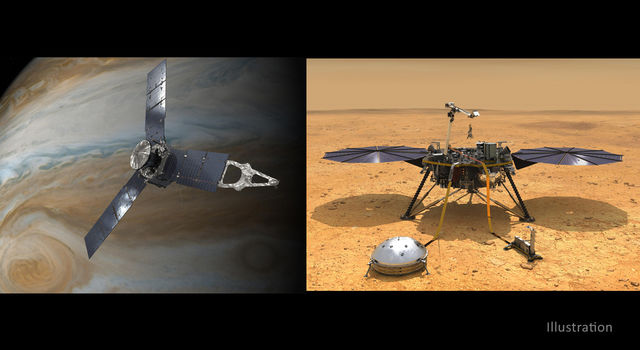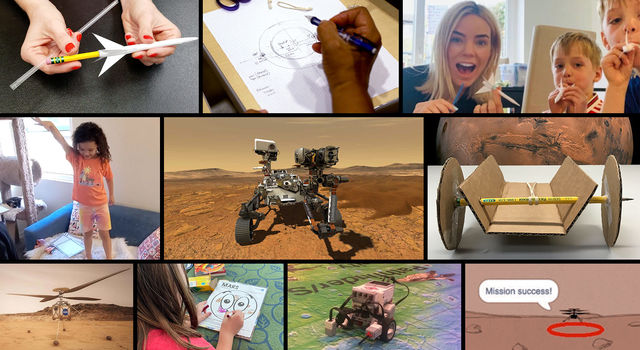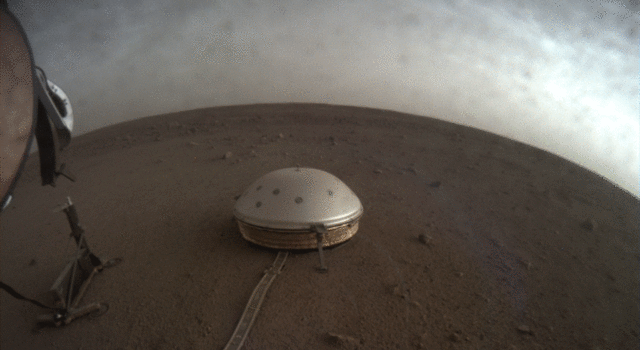Blogs | Dawn Journal | November 30, 2013
NASA's Dawn Fills Out its Ceres Dance Card
Dear Hand-Me-Dawns,
Gliding smoothly through the main asteroid belt between Mars and Jupiter, Dawn continues to make good progress on its ambitious mission of exploration. It is patiently but persistently pursuing Ceres, the second destination on its interplanetary itinerary.
Protoplanets Ceres and Vesta, the two most massive residents of the asteroid belt, were discovered at the beginning of the 19th century, and they have tantalized astronomers and others curious about the nature of the universe ever since. (Indeed, Ceres was the first dwarf planet discovered, having been found 129 years before Pluto.) They have waited patiently for a visitor from Earth since the dawn of the solar system. Dawn's objective is to turn these uncharted orbs from tiny smudges of light amidst the stars into richly detailed places. It succeeded spectacularly at Vesta in 2011 - 2012, and it remains on course and on schedule for doing so at Ceres in 2015.
Next month, the adventurer will pass an invisible milestone on its celestial journey. On Dec. 27, it will be equidistant from these behemoths of the asteroid belt as all three follow their own independent heliocentric paths. The spacecraft will be 0.21 AU (19.4 million miles, or 31.3 million kilometers) away from each world, the one already visited and the one yet to be reached. And as the indefatigable ship sails on the cosmic seas with its sights set on Ceres, our anticipation for glimpsing the alien landscape ahead grows and grows, while the now-familiar scenery of Vesta shrinks into the distance, fading over the horizon.
The next day, Dawn will be equidistant from two other solar system bodies, both of which have been known (to our human readers, at least) for somewhat longer than Ceres and Vesta have. On Dec. 28, our celestial ambassador will be 2.46 AU (229 million miles, or 368 million kilometers) from Earth and the sun. (We cannot specify in which century either of them was discovered.)
Its complex route through the solar system has already taken the spacecraft farther from each of these bodies before. In the current phase of the mission, it is receding from the sun again, climbing the solar system hill from Vesta to Ceres. (It approached the sun in late 2012 and 2013 as part of the strategy for arriving at Ceres's orbit when Ceres itself was there.) Having attained its greatest distance from Earth for the year in August, the spacecraft is temporarily getting closer to its planet of origin. (More precisely, as we discussed then, Earth is currently moving toward Dawn, because Earth travels faster in its solar orbit than Dawn does in its much more remote orbit.)
Dawn will reach two more impressive milestones in December, although neither pertains to its location. Soon the craft will surpass four years of ion thrust. While most spacecraft rely on conventional propulsion and hence coast most of the time (just as planets, moons, and asteroids do), Dawn's mission would be impossible if it did that. In order to orbit and explore two distant destinations, the only terrestrial probe ever to attempt such a feat, it must accomplish a great deal of maneuvering. It spends the majority of its time using its uniquely efficient and capable ion propulsion system, constantly putting a gentle pressure on its trajectory to gradually reshape it. Although the spacecraft has already accumulated far more time in powered flight than any other mission, it still has a great deal more ahead.
And in December, that thrusting will push the craft's speedometer past an extraordinary 20,000 mph (8.94 kilometers per second). (As we have seen in many previous logs, such as this one, this measure of the speed does not represent the actual spacecraft velocity. Nevertheless, it is a useful metric that avoids the complicating effects of orbital mechanics.) That is more than twice the previous record for propulsive velocity change set by Deep Space 1, the first interplanetary mission to use ion propulsion.
Dawn spends most of its time emitting a lovely blue-green beam of high-velocity xenon ions to propel itself. As foretold in the prophecy commonly known as the October log, however, we are now in one of just two periods of the long mission in which coasting is better for the trajectory than thrusting. Mission controllers took advantage of this time to instruct the robot to perform some special activities that would have been less convenient during routine ion thrusting. The reliable ship completed all of them flawlessly.
For more than 27 hours on Nov. 12 and 13, Dawn operated in a mode that had not even been conceived of when it was designed and built. It controlled its orientation in the frictionless, zero-gravity conditions of spaceflight using a scheme that was developed long after it left Earth. This "hybrid" control method operated perfectly, validating the extensive work engineers have invested in it and verifying its readiness for use at Ceres.
When it embarked on its bold journey more than six years ago, the ship was outfitted with four reaction wheels. By electrically changing the speed at which these gyroscope-like devices rotate, the probe can turn or stabilize itself. It generally used three at a time, with a fourth kept in reserve. For such a long and complex expedition, extending to well over one million times farther from Earth than the International Space Station, backup systems are essential.
One of the wheels experienced increased friction in June 2010, but the mission continued with the other three. A second met the same fate in August 2012, as Dawn was climbing away from Vesta. Other spacecraft have encountered similar issues with their reaction wheels as well, and the consequences can be dire.
We have described the operations team's swift and productive responses to the regrettable behavior of the reaction wheels in a number of logs (see, as one example, here). As soon as the first wheel faltered, JPL and Orbital Sciences Corporation began working on a method to operate with fewer than three in case another one had difficulty. They developed software to operate in a hybrid mode of two wheels plus the small hydrazine-powered jets of the reaction control system and installed it in the craft's main computer in April 2011 so it would be available at Vesta if needed.
Given the problems with reaction wheels on Dawn and other spacecraft, engineers do not have high confidence that the two remaining units will operate for long (although it certainly is possible they will). Thanks to their remarkable ingenuity and resourcefulness, the team has devised a detailed plan that should allow Dawn to complete its extraordinary mission using only the hydrazine thrusters, achieving all of its objectives in exploring Ceres regardless of the condition of its wheels. (Note that it is not even obvious that doing so is possible, but then again, it isn't obvious that sending probes so far from our home planet is possible either. Part of the thrill of a solar system adventure is overcoming the extremely daunting challenges.) So now, hybrid control would provide an enhancement, extending the supply of precious hydrazine propellant and giving the spacecraft the opportunity to operate even longer at Ceres than it would without the two functioning wheels. When the hydrazine is exhausted, the mission will conclude.
Dawn will use hybrid control only in its lowest altitude orbits at Ceres, the final phase of the mission. (Beginning in December and continuing in 2014, we will describe all phases of the Ceres plan in detail.) Hybrid control will be called upon to perform three kinds of tasks for the spacecraft: train the suite of sophisticated sensors at the mysterious world beneath it, point the main antenna to distant Earth to transmit its findings and receive updated instructions, and rotate from one orientation to another. The innovative system has now unerringly demonstrated its capability to accomplish all three by executing exactly those functions earlier this month.
The confirmation that hybrid control works as intended is not the only task Dawn is carrying out during this coasting period. All of its scientific instruments (including even the backup camera) are being powered on and given thorough health checks, verifying that they remain fully functional and ready to reveal Ceres's secrets. Engineers also conducted some tests with the ion engine that has operated the longest of the three to confirm expectations of how it will perform at Ceres.
On Dec. 9, Dawn's four-week coast period will end. Once again it will turn to point an ion engine in the direction needed to push forward to its rendezvous with the distant and exotic world ahead. As the probe nears and then passes the halfway point on its remarkable journey from Vesta to Ceres, it is pulled by forces even more powerful than ion propulsion: the attraction of discovery, the lure of the unknown, and the draw of tremendous new insights and profound new understandings to be gained in a daring adventure far, far from home.
Dawn is 18 million miles (29 million kilometers) from Vesta and 22 million miles (35 million kilometers) from Ceres. It is also 2.78 AU (258 million miles, or 415 million kilometers) from Earth, or 1,125 times as far as the moon and 2.82 times as far as the sun today. Radio signals, traveling at the universal limit of the speed of light, take 46 minutes to make the round trip.
Dr. Marc D. Rayman
10:00 p.m. PST November 30, 2013
TAGS:DAWN, CERES, VESTA, DWARF PLANETS, SOLAR SYSTEM, MISSION, SPACECRAFT







